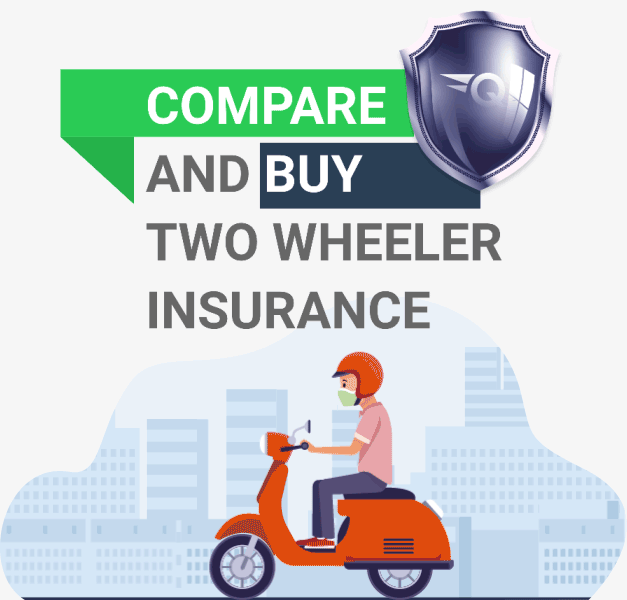
Continue with
Registration Number
Continue without
Registration Number
I Have
Brand new Bike
Nothing compares to the excitement of taking your favourite folks on a beautiful road trip during a monsoon. Your journey is made more relaxing by the lovely weather, the cold air carrying a fragrant petrichor, the melodious pitter-patter, and the dewy vegetation. However, driving in the rain is only fun if one drives very carefully. Simple road safety advice must be followed during the rainy season in order to make the experience hassle-free and safe (for oneself and other drivers). If the right safety precautions are not taken before and during the trip, riding in the monsoon can have its drawbacks, despite being attractive and invigorating. Here are top safety tips for driving in the rain.
Prior to driving in harsh conditions, it is crucial to check that your car is in top shape. During the rainy season, even the tiniest technical issue can have a significant impact on your ability to drive safely. You don't want to be stuck changing tyres on a muddy road while it is pouring cats and dogs. You must check that your automobile or motorcycle's tyres, windshield wipers, headlights, and brakes are in excellent operating order. Defog your windows as well to improve visibility. You could use items like Rain-X Anti Fog to complete the task!
Rainfall is erratic, particularly during the monsoon season. It will be sunny one second and then begin to pour heavily the next. Therefore, always check the weather forecast before hopping in your car. Additionally, this applies to both the final destination and your current position. Keep abreast with local weather forecasts before you travel. Make necessary changes to your plans if the forecast calls for a rainy period.
Timing is crucial! Identify the safest time of day. Know the distance and travel time between your current position and the desired location based on your expected driving speed. You must be aware that driving in the rain will naturally slow you down, and it will take longer than usual to navigate slick roads and move through traffic. So, depart earlier than you anticipated. Additionally, you can prevent yourself from driving at night, which is risky during the monsoon season. The most crucial rain safety tips we can provide you for monsoon road safety is to plan your travel ahead of time.
Imagine being caught in a distant location during a downpour with no petrol in your car and no nearby filling station. Unsettling, huh? To avoid having your automobile break down in the middle of the road, make sure you fill your car completely to the brim.
This is one of the most important rain safety tips for roads in hilly locations, according to transportation experts. In the mountains, most gas stations close around 7 PM, and during the rainy season, sometimes even earlier.
The roads are muddy and treacherous. Less people are seen. Save your temptation to race and overtake for a different occasion. Many cities' established traffic safety guidelines specifically advise drivers to drive slowly during the rainy season so they can see where they're going and don't endanger other road users' safety. In addition, slippery surfaces can cause tyres to lose traction and skid, which can result in the driver losing control of the car.
Yes, even during the day! When driving in the rain, particularly on the hills, visibility is crucial. Both your vision and your ability to be seen must be crystal clear. Additionally, keeping your lights on will assist other drivers in recognising your car and preserving a safe distance. Just be careful not to flash your high beams directly into an approaching vehicle since this could briefly impair the driver's vision and lead to an accident.
Give yourself and other cars plenty of space so that you can see what's coming and avoid a collision. You can't just slam on the brakes and pull up in an instant, believing the cars behind you will do the same, because visibility is reduced and the roads are wet. In addition, the driver in front of you might not have read the road safety during rainy season and taken the appropriate precautions!
Going off the usual path can be enjoyable in the summer, but during the monsoon, especially in the highlands, it can only cause you grief. When travelling in the mountains, just keep in mind the following road safety during rainy season:
Driving in a storm or during a downpour is not suggested since it makes it difficult to see well and maintain control of your car. It is preferable to simply pull over in a good area on the side of the road during such circumstances. In order for onlookers to notice your vehicle and prevent an accident, turn on your headlights and taillights.
If you were stranded on the road in the middle of the night, what would you do? Do not forget to bring the following items:
Click to Read More Article: Two Wheeler Insurance Cover In Natural Disasters
By adhering to the safety tips for rainy season and recommendations above, you can ensure your safety when driving in the rain as well as the safety of those around you.
Driving in the rain at night or during inclement weather is not advised. Driving on flooded roads can also be disastrous because you never know what boulder or hole that murky water up ahead is concealing.
You should drop your speed to roughly 1/3 of the posted speed limit in order to drive safely in the rain because slippery roads tend to reduce traction. When it starts to rain, slow down to 40 mph if you were previously travelling at 60 mph on a dry stretch of road.